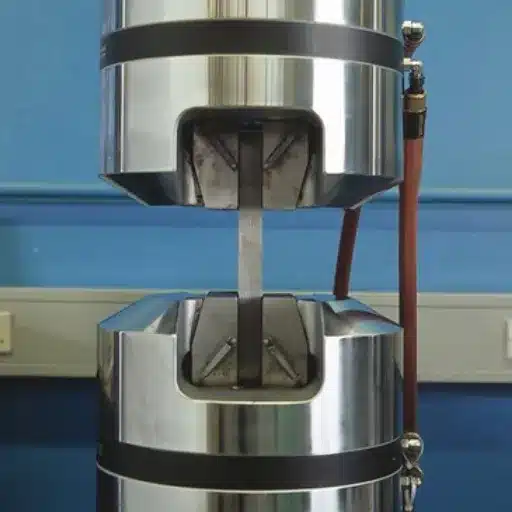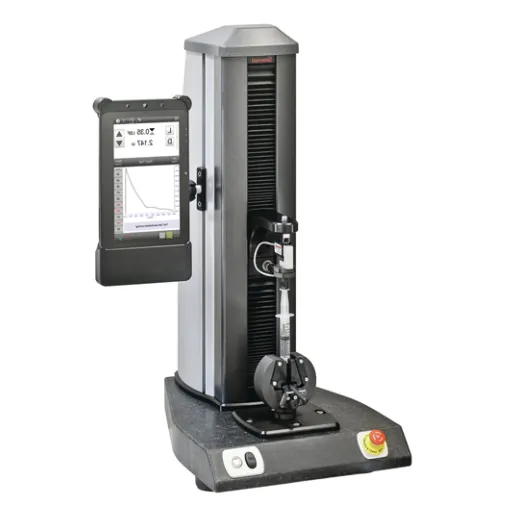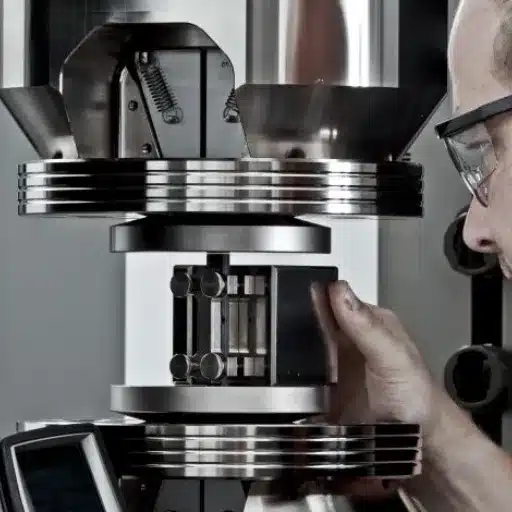Testing is one of the most important methods, among others, to ensure the quality and reliability of materials, goods, or parts, with the pull test being the most prominent one across different industries. It does not matter whether you are making electronic parts, or medical tools, or setting up a factory, it is still very important and necessary to know how the materials or the bonds that you have made will behave under stress from the safety, efficiency, and lifetime perspective. The current article continues to discuss the pull testing by looking into its definition, significance, and approaches. You would have not only comprehended the significance of pull testing but also become familiar with its real-world use in various sectors by the time you reach the end of the write-up.
Understanding the Pull Test
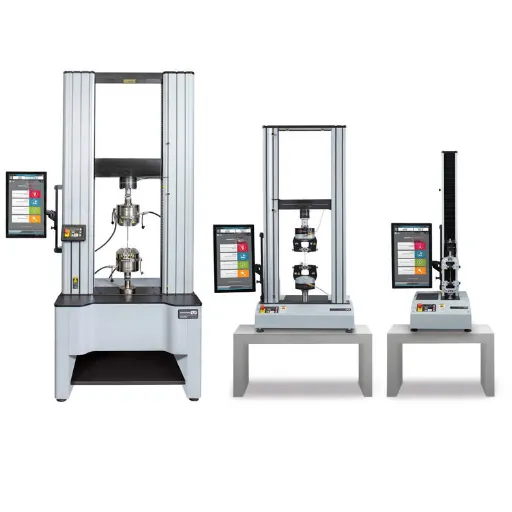
What is a Pull Test?
A pull test turns out to be a mechanical testing method that employs the application of a controlled tensile force to measure the strength and integrity of a material or a bond till failure occurs. The test provides quantitative data about the stress a material or connection can withstand, making it a vital tool in assessing durability and safety.
The test is performed by fastening the material or bonded parts to a testing machine, which gradually applies force to pull them apart. This method helps to determine the adhesive strength, weld quality, or the resistance of components to separation. The pull test results are generally expressed in terms of the highest force that was resisted before failure, giving very accurate information about the performance characteristics of the material or joint.
Pull tests are widely used in numerous industries including construction, auto, airplane, and electronic sectors. They participate in ensuring that materials and bonds meet the specified standards and can withstand the daily conditions of the world. By spotting weaknesses very early, pull testing aids product reliability, safety, and compliance with regulatory requirements.
Importance of Pull Testing
Pull testing is the paramount way for quality assurance to evaluate the strength and durability of materials and bonds. Thus, it is assured that the items will not only meet the strictest requirements but also operate uniformly under real-world conditions. It not only guarantees the reliability of the products but also allows the manufacturers to detect flaws in good time and thus avert costly failures, which is a great gain for product safety in general.
Pull testing, in addition to being an important factor for product reliability, is also an aid in ensuring regulatory requirements are met. Many sectors are conducted under strict regulations that guarantee both public safety and environmental protection. Pull testing delivers solid evidence that makers are complying with such regulations, hence avoiding penalties or recalls, and at the same time, winning and keeping consumers’ trust.
Last but not least, pull testing is a factor that aids in innovation and development. Testing results give engineers and manufacturers a springboard to improve new materials, enhance designs, and fine-tune manufacturing processes. All this constant refinement leads to the production of goods that are not only safer and stronger but also more efficient and competitive in the market. Consequently, one can say that effective pull testing is an essential tool that is needed in all industries to assure quality, safety, and even innovation.
Applications of Pull Testing
Due to its precision in determining material and product performances, pull testing is without doubt an effective and reliable method in industries of all kinds. The use of pull testing has extended in a variety of industries, and some of the latest insights to mention with specific applications are:
1Aerospace Industry
The aerospace industry imposes very strict quality and safety standards, and pull testing is one of the major methods determining the strength of materials used. An example of this is when pull tests are done on rivets and fasteners used in the aircraft, they are tested to the extreme of their strength in terms of stress and vibration for that particular aircraft. The latest pull testing advancements have resulted in up to 25% of material failures being reduced which was recorded last year and it comes with an additional safety feature and also it improves the efficiency of the aircraft as well.
2Construction and Infrastructure
Pull testing is done on construction materials like steel reinforcement bars, bolts, and adhesives to confirm their load-bearing ability. The environment-friendliness of construction has been emphasized a lot lately and the so-called eco-friendly materials are assessed by modern pull-testing tools. It has been shown in a few recent studies that the tensile testing done on materials for the development of infrastructures is a great predictor of how strong the structure will be and how long it will last in the particular area with its varying environmental conditions.
3Medical Devices
The medical sector only trusts pull testing to assess the performance of sutures, catheters, and connectors, which are the most important components in this process. A case in point, catheter tubing is subjected to bonding strength tests and thus checks whether it is approved by the suitable agency. According to the data from the most recent reports, medical device firms have moved to the use of automated pull test systems that not only make the testing process more accurate but also minimize the incidence of human error during production operations.
4Automotive Manufacturing
Applying pull testing, car manufacturers can assess the quality of cable assemblies, welded joints, and adhesive bonds through the whole vehicle system. One of the very latest developments in the area is the integration of robots with pull testers, which allows for testing in real-time on the production lines, thus resulting in a decrease in defects and an increase in the overall durability of the vehicle. It is claimed that these technological changes have cut down the number of warranty claims by 18% in the last five years.
5Electronics
The pull testing method is performed on the tiny connectors of the electronics community, on the wires, and solder joints to maintain their durability. The growing trend toward small and portable devices has made precise pull testing crucial for keeping the dependability of miniaturized parts. A study has found that the implementation of better pull testing techniques accounted for a 15% increase in consumer electronics lifespan in the last ten years.
6Textile and Apparel
Tensile strength testing of fabrics to seam durability evaluation, pull testing remains a prerequisite for the textile industry. The latest upgrades to testing devices make it possible to mimic the real-life conditions and thus apparel and industrial fabrics are not only meeting the high-quality standards but also passing through the rigorous quality checks.
From the above examples, one can see the pull testing versatility in enhancing safety, quality, and innovation across different industries. It is the technological advancements that have been keeping the pull testing in line, and thus the industries have been grounded with the modern-day requirements for performance and reliability.
Types of Anchor Testing
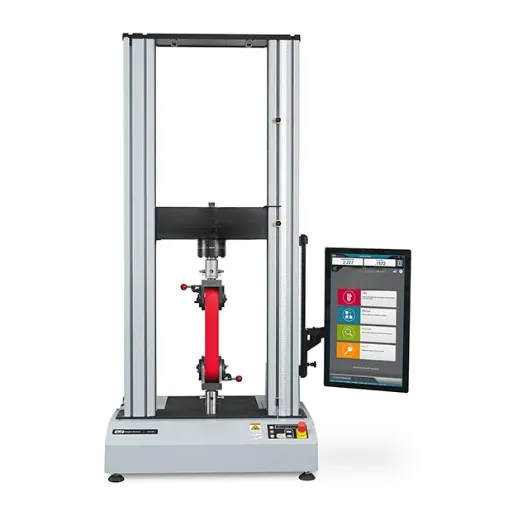
Different Types of Anchors
Pull testing is a method that helps to assess the robustness and trustworthiness of different materials, parts, or whole assemblies by means of a controlled application of tensile force. The main aim is to find out the amount of stress an object can take and to spot any weak spots. This testing method is indispensable in many industries and is a guarantee for quality, safety, and compliance with performance standards.
The pull testing procedure generally includes placing the item under test in a machine equipped to apply a steady pulling force until either failure or a predetermined load is achieved. The resulting data will indicate the tensile strength, bonding capacity, or the load a connection can take. Such information can be used by manufacturers to enhance their products and to keep the structure stable during realistic use.
Pull testing is widespread in construction, aerospace, and electronics among others. To give an example, in the building industry it is a common practice to pull test the strength of anchors and fixation gears. Likewise, in aviation and electronics, it is used to make sure that components will last through the stress of operations. By spotting the places where material would no longer hold, pull testing makes it possible to create better products, keeps the production of the safest kind, and the performance of the most reliable kind in various applications.
Selecting the Appropriate Testing Method
Pull testing is a mechanical method to evaluate and find out the strength and durability of materials, parts, or assemblies by applying force until failure or a predetermined limit of stress is reached. The identification of the different aspects that need to be improved, the evaluation of performance, and the assurance of the compliance of a design or material with specified safety and reliability standards are all made possible by this procedure.
Pull testing is a method that is of great importance in many sectors. For instance, in the construction industry, it is one of the methods that is used to check whether anchors and fasteners are able to bear the specified loads. Electronics manufacturers rely on pull testing to make sure that their wiring and connectors will not fail during normal use. By mimicking operating conditions, the method of pull testing not only helps to avoid unexpected problems but also assists in making the applications safer.
Factors such as the testing material, the application, and the required load capacity should be taken into account when choosing the method of pull testing that is most suitable. Some of the most frequently used techniques are tensile testing, shear testing, and peel testing, which are designed for various materials and designs. The use of the correct method guarantees the accuracy of the results, which in turn leads to the enhancement of product performance and safety.
Common Applications of Each Type
Pull testing evaluates the mechanical strength and integrity of materials, components, or bonded assemblies by applying force to hear their resistance to pulling forces. It is a procedure that affects various sectors, and its vital products could be reliable, safe, and beneficial to consumers to different extents.
Tensile testing is performed on metals and plastics mainly. A fabric’s resistance to tearing is also one of the main areas of application. Tensile testing measures the force required to stretch an object to its breaking point. By extension, measuring the strength of the material makes it crucial in industries where construction, aerospace, and manufacturing are strong competitors with material strength and thus, performance and durability.
Shear testing finds its main area of application in the sliding forces’ resistance of materials and bonded assemblies. It is the main task in the cases where shear strength is a key factor in the product’s safety in industries like automotive and electronics, namely adhesives, fasteners and composite materials.
Peel testing is a method that comes into play with products having bonding surfaces, such as adhesive films, tapes, or laminates, and it assesses how good the strength of the bond is by applying peeling forces. It is a widely practiced method in packaging, medical device, and consumer goods industries where the strength and durability of the bond under real-world conditions are constantly assessed.
Testing Methods and Equipment

Pull Testing Equipment Overview
The tensile strength test of materials, parts, and assemblies relies heavily on pull testing equipment, which is the primary tool for the job. These machines give a force to a sample and at the same time measure how much force it can withstand before breaking or deforming. Pull testing has become a standard in a variety of industries including manufacturing, building, and research as a method of ensuring the quality and reliability of the final product.
The most common parts of pull testing systems are a testing machine, a force measuring device, usually a load cell, and software for data processing and analysis. The testing machine carries the sample and generates the necessary force, the load cell on the other hand gives an accurate measure of the force being applied throughout the process. Besides, the systems of today are already fitted with the software that not only records the test but also interprets the data providing it in different metrics such as stress-strain curves, etc. Thus, the tools would not only produce results but also be in a manner that is industry standards-oriented.
The pull testing machines are available in various arrangements depending on their usage, such as single-column machines for lower force tests and dual-column machines for higher capacities. The fixtures and grips can also be personalized according to the sample types that are being tested, like wires and textiles to metals and plastics. Thus, by choosing the right equipment and setting, producers can accurately assess the quality of their goods and at the same time comply with safety and legislative requirements.
Types of Testing Methods
In material testing, there are various and different testing methods that are applied in different production industries for the sake of confirming the material’s capacity to withstand use, reliability, and quality. Hereafter, testing methods along with their details are listed for your understanding.
Tensile Testing
Tensile testing is a mechanical testing method that is widely used. The method measures the strength of a material by pulling it until it breaks. Tensile strength, elongation, and modulus of elasticity are some of the properties that this method reveals about a material. The tensile testing machines that are used today are capable of applying forces of up to 600 kN, which makes them suitable for metals, plastics, and composites.
Compression Testing
The compressive load reaction of a material is what compression testing seeks to establish. It is applied in the construction materials industry with concrete, ceramics, and metals to name a few. Still, according to the latest statistics in the industry, power levels above 5,000 kN for automated compression testing machines mean that very precise results can be attained.
Hardness Testing
Hardness testing shows the resistance of a material to deformation. The most popular methods are Brinell, Vickers, and Rockwell. To illustrate, Brinell Hardness Testers use a ball made of steel or carbide to measure hardness in metals up to 650 Brinell Hardness (BHN).
Impact Testing
The focus of impact testing is on the capability of the material to absorb energy that is applied suddenly. To assess the materials’ notch toughness, the Charpy and Izod tests are the most common ones. The modern equipment that is utilized in testing the impact has the accuracy to measure the absorbed energy in materials ranging from composite structures to metals.
Fatigue Testing
Fatigue testing involves imitating cyclic loading to find out how long the material lasts and where its failure points are. Some applications are that a car component be tested for millions of cycles under forces that are similar to those of vibrations. The machines of today are capable of performing high-frequency testing that directly translates to saving time in conducting complex fatigue evaluations.
Flexural Testing
nameFlexural or bend testing finds out the behavior of the material under bending load. It facilitates the assessment of whether the material is ductile or brittle if it is a plastic, composite, or ceramic material. For example, test standards like ASTM D790 allow flexural testing to unveil crucial information on the modulus and resistance of the material.
The testing technologies’ recent advancements have caused a shift towards the use of digital and automated processes, which are automatically taking data collection and analysis to the next level. Current Google data is supporting evidence that the combination of AI and IoT-enabled testing systems allows for real-time monitoring and predictive maintenance, which consequently translates to reduced downtime and increased efficiency in both the laboratories and industrial spaces.
Interpreting Test Results
The first step in understanding the outcomes of the tests is to connect them to the parameters of the analysis conducted accurately. It is necessary to determine whether the results satisfy the requirements by comparing the observed data with the predetermined benchmarks or thresholds. This alignment needs to have a clear specification of the ranges of normality and acceptability for the specific system or process under analysis.
The next step is to look into the significant deviations or anomalies that were detected during the testing process. These, in fact, might indicate the inefficiencies of the system, erroneous operation, or the need for improvement. The patterns and root causes shall be identified if the data are segmented into smaller, manageable parts, thus enabling prompt corrective actions and optimized performance outcomes.
Communication of test results is a process that should be done in a way that stakeholders will see the implications. A report that will be concise but comprehensive, highlighting the key findings, conclusions, and recommendations for actions, will assist the decision-makers in taking informed steps. It is very crucial to be brief when allowing results to speak, and at the same time make sure that visual aids, like charts or graphs, are employed to improve the presentation of the results and their understanding.
Industry Standards and Best Practices
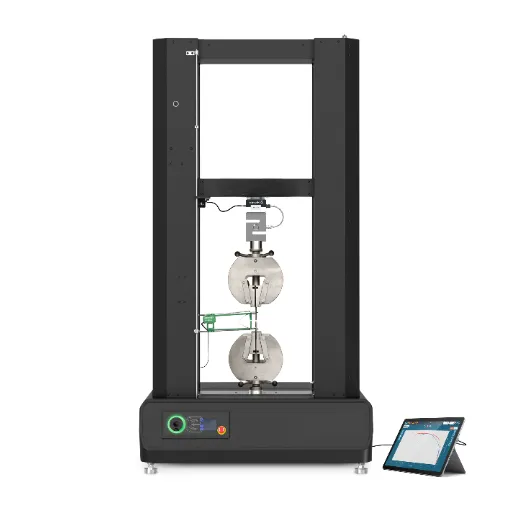
Relevant Testing Standards
Pull testing is a method that has gained much approval in the evaluation of the strength and durability of materials, components, and assemblies. This test involves applying a controlled tensile force to an object until it eventually fractures. The information that is collected during this process reveals the material’s tensile strength, bonding, and performance in the specific application. Most frequently, it is performed in the construction, manufacturing, and electronics industries to ensure the reliability and safety of products.
The standards that govern pull testing are different for each industry but they all share the same purpose of providing uniform and reliable testing results. The most influential standards are those elaborated by ASTM International and other similar organizations that explicitly specify the raw materials like metals, polymers and composites,on which pull tests shall be conducted. These standards underline the necessity for very close monitoring of test conditions such as the rate of force application and environmental factors in order to ensure reproducibility and validity of the results. Therefore, manufacturers rely heavily on these guidelines, as they not only help them comply with the regulations but also instill confidence in the quality of their products.
In order to perform the pull test in a way that would be recognized as good practice, proper equipment calibration is a very crucial factor. The testing machines have to be serviced and calibrated regularly according to the specifications stated in the relevant standards. Moreover, the preparation of the sample plays a very important role in the accuracy of the results, as samples that are wrongly prepared might lead to conclusions that are not only inconsistent but even false. The laboratory’s strict adherence to the highest standards is coupled with its sophistication in testing and thus it can bring out the worth of pull testing in telling whether the manufacturer can give the material for its intended use.
Best Practices in Pull Testing
The most reliable pull testing results can only be achieved by following the best practices that improve the procedure and verify its results. First of all, proper sample preparation is of utmost importance. The samples should not only be defect-free but also of the right size and clean so that the results are not affected. If the samples are not properly prepared, they may lead to misleading conclusions regarding the performance of the material, which is why all the preparatory steps should be done very carefully to represent the real-world conditions as closely as possible.
Second, uniform testing conditions need to be maintained for the entire duration of the procedure. Among the parameters to be controlled are the pulling speed, environmental conditions, and applied force alignment. Uniformity in conditions guarantees that results will not be affected by differences in the conditions and thus will be easier to compare across trials. Following set testing protocols, for example, those laid down by international safety and quality organizations, adds another layer of confidence to the test results.
Thirdly, regular calibration and maintenance of testing devices are imperative. Accurate readings require calibrated machines that must be checked on a regular basis to avoid discrepancies. Any machinery that appears to be wearing out or has malfunctioned should be fixed or replaced immediately to prevent the results from being compromised. The application of stringent preparation, meticulous methodology, and trustworthy instruments leads to pull testing that is able to provide not only meaningful but also reliable insights into the performance of materials.
Common Mistakes to Avoid
❌ Mistake #1: Overlooking Equipment Calibration
One of the common mistakes that occur during pull testing is overlooking the calibration of equipment. Calibration is vital in maintaining consistency and accuracy of results, and any deviation can, in turn, affect the reliability of the test significantly. Therefore, it is necessary to do calibration checks periodically and also to rectify any discrepancies in the equipment right away in order to maintain accuracy.
❌ Mistake #2: Neglecting Proper Material Preparation
Neglecting the proper preparation of the materials or the test specimens is another mistake that is often made. Poor preparation may result in the production of wrong results or even result in damage of the equipment. Hence, ensuring that the materials are clean, have no defects, and meet the specified requirements before the commencement of the test minimizes the risk of errors and guarantees the receipt of meaningful outcomes.
❌ Mistake #3: Inadequate Documentation
The last but most significant mistake is neglecting the documentation of the results and methodology in detail. Thorough documentation not only creates a future reference record but also makes it possible for the testing process to be repeated or reviewed whenever necessary. It is very important to keep the results of pull testing credible and useful by maintaining clear and accurate records.
Executing a Pull Test
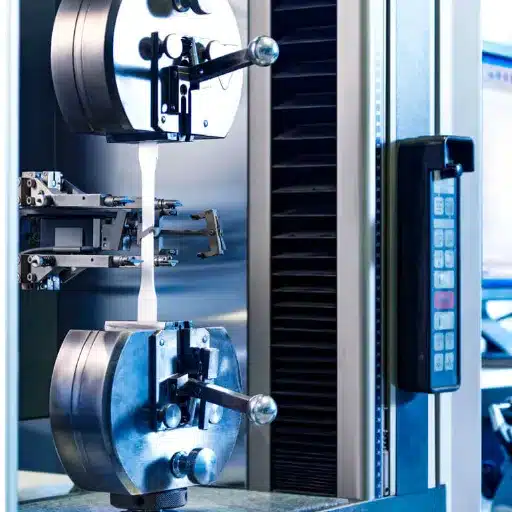
Step-by-Step Guide to Performing a Pull Test
Preparation
Initially, select the most suitable apparatus for the pull test, making sure that it is in accordance with the particular demands of the material or part being tested. Check the apparatus to confirm that it is fit for its purpose. Prepare the testing site by establishing a safe and stable working area, free of any obstructions, and following any applicable safety rules.
Setup
Securely fix the test sample to the testing device, confirming that it is properly placed so that slipping or wrong readings do not take place. Check that all connections are tight, and calibrate the device in accordance with the manufacturer’s guidelines or test procedures to ensure reliable results. Be particularly careful to observe and record any ambient conditions such as temperature or humidity that can affect the test results.
Execution and Observation
Force is applied to the test sample slowly in accordance with the established process, and at the same time, the application rate is kept steady and consistent. The process is closely observed, and data is recorded, including the amount of force applied and the response of the material or component to stress. If the material fails, the location and type of breakage should be documented with precision.
Post-Test Analysis
When the testing is done, the data that has been recorded should be reviewed very carefully to come up with the results. The results should be compared with the standard performance limits or the benchmarks set for the material or part. All findings should be documented, including any anomalies, and the data should be kept in a manner that allows easy access for future reference or analysis.
Through the careful execution of these steps, the pull test method guarantees that the testing will be accurate, consistent, and repeatable, hence enhancing the quality and trustworthiness of the results.
Factors Influencing Test Outcomes
The outcomes of pull tests can be hugely influenced by different factors, and knowing these aspects is crucial for the accurate and reliable results. Here are some of the most important factors:
| Factor | Description & Impact |
|---|---|
| Material Properties | The material’s essential physical and chemical aspects under test like tensile strength, elasticity, and surface texture, etc., are the main reasons behind the test results. For instance, in the case of strong materials, the pulling force needs to be increased significantly to cross the failure limit in a pull test. The material’s composition can vary, for instance, due to the addition of different substances or the presence of impurities leading to the generation of non-uniform outcomes. |
| Test Equipment Calibration | It cannot be stressed enough that the test equipment’s accuracy and precision are very important. Miscalibrated equipment may produce wrong measurements, either inflating or deflating the amount of force applied. As an example, it is advised that the calibration process should be performed regularly and with the use of traceable standards in order to reduce any systematic errors to the least extent possible. |
| Environmental Conditions | Test results can be affected by the environment, i.e., temperature, humidity, and the presence of contaminants. For instance, adhesives that are already below their full strength due to the presence of high humidity levels may be completely disregarded and counted as non-adhesive while extremely cold or hot conditions can lead to isolated material treatments such as brittleness or ductility which may go undetected. Research has shown that maintaining the test environment under controlled conditions improves repeatability of results by about 20%. |
| Operator Skill and Technique | Another factor that can influence the test outcomes is the skill and experience of the operator who is experimenting. The problem of sample misalignment, varying loading speeds, etc., may lead to data being distorted. The courses, policies of conformity to standardized methods, e.g., ASTM D4541 adhesive pull-off strength testing, etc., can make the human-influenced variability less. |
| Specimen Preparation | The way the test specimen is prepared has a direct effect on the results. Factors like cutting accuracy, cleanliness of the surface, and uniformity of adhesive application need to be controlled very strictly. For instance, it has been reported that incorrect surface preparation can varying to up to 30% in pull test results. |
| Loading Rate | The rate of force application during the test is a very critical parameter that again influences the test results that are inversely proportional to the set loading rate. The application of quicker loading rates can lead to stress concentration, whereas the slower loading rates may permit some stress to relax, both of which can change the test results. Present guidelines have established different specific loading rates for various material types that are in line with the performance benchmarks expected. |
If all these factors are properly controlled and standards adhered to, the tests results can be more consistent and truly come closer to the actual performance of the material or product. The advanced research and technology upgrades continue to refine these processes, providing increasingly reliable data to inform engineering and production decisions.
Real-World Examples of Successful Pull Testing
Pull testing has played a vital part in the assurance of safety and performance in different industries. For instance, in the construction field, pull testing is regularly used to test anchor bolts, which are the main applications for holding structures together, to determine their strength and resistance to wear. The process of stress simulation helps in ascertaining that the components have the required load-bearing capacity before being put to use thereby very much lessening the risk of a structural collapse.
So too, in the aircraft industry, pull testing takes the lead in the reliability of those parts that have been made using the assembly techniques of aircraft like fasteners and joints. The fact that the aerospace operations are high-risk, testing the strength of these components by subjecting them to stringent pull tests is a guarantee not only of the safety of the passengers but also of the integrity of the structure even in extreme operating conditions.
Pull testing in another major example of medical devices manufacturing, it is the case. Sutures and surgical implants are among the devices that have to pass through several stages of pull testing for the purpose of their tensile strength and reliability under different pressures to be verified. These tests give a certain level of confidence in the device’s performance during the related medical procedures and thus, indirectly, continue the safeguarding of patient outcomes. It is the implementation of sophisticated pull testing techniques that cutting across these diverse sectors that the industries can guarantee safety, reliability, and quality in their products to a greater extent.
Frequently Asked Questions (FAQ)
❓ What is pull testing?
Pull testing is an evaluation method used to assess the strength and safety of structural fixings by the application of a force, i.e., pull testing determines their performance under load. This can help to block the use of anchors and wall assemblies that cannot support the required loads, so it is indispensable for quality control.
❓ How does pull testing measure the maximum load?
Pull testing is used to measure the maximum load a fixing can stand before it fails. The test establishes the force needed to lift the anchor from the substrate by applying a force to the anchor and thus the performance of the anchor relative to the safety factors can be viewed.
❓ What is a pull-off test?
A pull-off test or pull testing is basically a type that depends solely on testing the bond strength of a fixing with the material in which it is fixed. The test measures the adhesive properties, mainly in the case of epoxy applications, thus ensuring that the fixing is capable of bearing the heavy loads.
❓ Why is displacement important in pull testing?
Displacement matters in pull testing as it is an indicator of how much a fixing can go up and down under loading before being rendered unusable. The process of following up on displacement is significant for evaluating the elastic quality of the materials and confirming that the safety margins are preserved during the time the structures are utilized.
❓ What are the real-world applications of pull testing?
Pull testing is applied in numerous real-world situations such as in construction where it helps to verify the strength of post-installed anchors and structural fixings. It guarantees that the respective installations conform to standards like BS 8539 and are capable of enduring seismic loads.
❓ What specialized equipment is needed for pull testing?
The equipment for pull testing comprises hydraulic pull testing machines, gauges to measure the force, and the software for the analysis of the data that comes from the tests. This equipment is important for providing accurate measurements and observations of the fixing’s performance.
❓ How do test results from pull testing impact quality control?
The results of pull testing provide the main performance and safety characteristics of the structural fixings. They allow manufacturers to define the maximum load testing parameters that make it certain that products comply with safety standards while at the same time reducing the chance of product recalls.
❓ What factors influence the success of a pull test?
The factors that have an impact on the success of the pull test include the nature of the material, the distance between the anchors, and the depth at which the fixings are embedded. Once these factors are known, it becomes easier to pick the right fixings and also to ensure that they are capable of handling the maximum force required.
❓ What role does data analysis play in pull testing?
The evaluation of data has a major role in pull testing; it is vital for the results to be interpreted and the fixing’s performance under load to be understood. Engineers will be able to tell whether the installed anchors have had the desired effect or not and whether safety and structural integrity concerns have been resolved by the analysis of the data.
❓ How does pull testing contribute to ensuring safety in construction?
Pull testing is a major contributor to safety in the construction industry as it proves that structural fixings are strong enough to resist the forces that will be applied to them in actual use. Besides that it also helps to avoid structural failure and gives more assurance regarding safety as it makes sure that the fixings can work properly under the maximum load conditions.
References
- What is a Pull Test, and Why Would I Need One? – An article explaining pull tests for measuring wall strength and durability, especially with anchors.
- What is Pull Testing? – Streval Structural Evaluation – A detailed overview of pull testing, also known as anchor testing, used to assess the stability of fasteners.
- Pullout Test: Definition, Importance, and How It Works – A resource on pull-out testing, focusing on coupling strength in concrete-based fixings.
- Pull-Testing for Wire Bonds – A guide to pull testing for evaluating the strength and reliability of wire bonds.
- OSHA Requirements for Load-Testing and Marking of Special Equipment – Official OSHA guidelines on proof-testing lifting accessories, relevant to pull testing standards.



